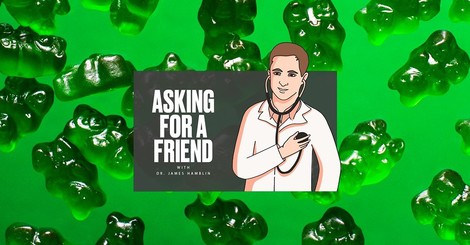Your podcast discovery platform
Curious minds select the most fascinating podcasts from around the world. Discover hand-piqd audio recommendations on your favorite topics.

piqer for: Health and Sanity Boom and bust Climate and Environment
Melissa Hutsell is an award-winning freelance journalist with a deep rooted passion for both community and international journalism. She was born and raised in Northern California, and has lived, studied, worked, and traveled in more 20 different countries. Melissa holds a Master's degree in Global Journalism from City University London, as well as degrees in Journalism and Globalization from Humboldt State University. Though she covers various topics as both a writer and editor, she specializes in business and cannabis journalism.
What’s The Best Way To Consume Cannabis?
The medical community has long stood by the belief that the best way to avoid the risks of cannabis use is to abstain from it altogether.
But, like sex — abstention isn’t practical.
More medical professionals realize the need for more research; they also recognize that consumption is moving more rapidly than science. Simply put: people will consume … so, what’s the best way?
The author looked to the Canadian-based Lower-Risk Cannabis Use Guidelines (LRCUG) for suggestions.
First up, smoking: Doctors have long claimed that smoking anything — cannabis, tobacco, etc. — is bad for your lungs, and can eventually lead to lung cancer. It doesn’t offer the most accurate type of dosing, either. So, this obviously isn’t the best way, considering the plethora of other consumption methods available.
Vaping: This method is growing in popularity, especially among millennials. Dosing is easier, and effects are felt faster. Perhaps “vaporizing” is a safer alternative to smoking, but as the author states, “The idea that vaping mitigates the risk of smoking could make people more likely to intoxicate themselves, more often, et cetera.” But, if you're gonna smoke ... the author suggests ... vape.
Edibles: As opposed to smoking, eating cannabis-infused food can be a safer way to consume. However, ingesting THC affects everyone differently, and there isn’t always standardization when it comes to edibles. To avoid dosages that are too high or too low, check labels and seek consultation (from a dispensary for example).
Until more is known, the industry will set standards for itself: labeling and providing alternative consumption methods are good ways starting point.
Until then, start small!
Stay up to date – with a newsletter from your channel on Health and Sanity.
